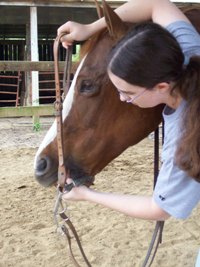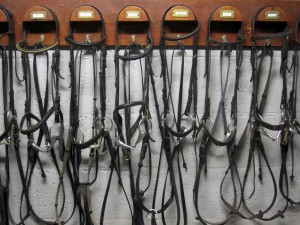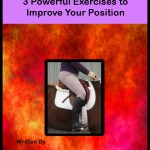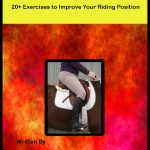Clashing Teeth, How Do I Keep the Horse’s Head Down When Putting On the Bridle
How Can We Help Keep The Horse’s Head Down When Putting On the Bridle

Before continuing on the first step is to make sure your horse is in no pain. Pain from the bridle itself, teeth, muscle soreness etc. Eliminate any cause for discomfort.
Bad handling, discomfort due to an injury or physical pain could have been the start of the head raising issue and then it became a learned habit. Once this habit is learned it is up to us to teach the horse a new habit. One which is safe, pleasant and easy for the handler and for the horse.
Before trying to put the bridle on, teach your horse to lower its head. Have the ability to lower your horse’s before you try to put the bridle on. Devote 10 minutes each time you visit your horse to lowering its head. Don’t just work on this while putting on the bridle.
How to Lower the Horse’s Head

Put the halter and leadshank on the horse and have the horse in a safe confined area. While standing on the left hand side of your horse reach up and place your thumb and forefinger just behind the horse’s ears. Scratch and massage the area with your finger and thumb.
Step 1. If your horse tosses his head, gently and distinctly follow his head with your hand. When the horse stops shaking its head remove your hand as a reward and reward your horse by scratching him on the withers. Do this until the horse understands when you reach up to behind his ears he is to keep his head still.
Step 2. Place your hand directly behind the horse’s ears and apply firm and steady pressure with your thumb and forefinger. Continue to hold your thumb and forefinger there untill the horse relaxes the muscles directly behind his ears. These muscles will get soft and pliable as the horse softens and relaxes.
As soon as the muscles relax, remove your hand by sliding it down the horse’s neck toward his withers, and reward the horse with a scratch. Repeat this until you understand the horse knows you are asking it to relax.
Step 3. Again place your thumb and forefinger behind the horse’s ears and apply steady relaxed pressure. Hold your hand steady until the horse relaxes and lowers his head. It may take a few seconds and it may take a few minutes.
Note : As soon as the horse relaxes and lowers his head a millimetre! – let go and reward the horse.
Putting the Bridle On

Now you have confirmed how to lower the horse’s head, practice how to put the bridle on. Most people have been taught to hold the cheek pieces an reach under the horse’s head and hold the horse’s head down. This is fine if you are twelve. But how does the horse put his head down if you are standing under it?
Step 4. Rest your right arm above and between your horse’s ears. If you have completed step 1, Step 2 and Step 3 above, correctly your horse will lower his head. Now, grasp the crown piece of the bridle with your right hand and guide the bit to the horses lips and teeth with your left hand.
During this time the horse should hold his head in a natural lowered position. If the horse has raised his head you are more likely to bang the teeth of the horse and cause more damage.
Step 5. While the bit is near the horse’s mouth, use your thumb to encourage the horse to open his mouth. Slide your thumb into the interdental space. If your horse is unwilling to open his mouth wiggle your thumb against his tongue.
Step 6. Once the horse opens his mouth raise your right hand (with the crown piece) up toward the horse’s ears and slide the bit into position. While doing this use your left hand to guide the bit and keep the noseband and reins from getting tangled.
Adjust the bridle and you are done.
When removing the bridle, keep your right hand positioned above the horse’s head directly behind the horse’s ears to prevent the horse from flinging his head up!
 Try these three powerful exercises to get strengthen your position.
Try these three powerful exercises to get strengthen your position.

This is an easy to understand tutorial on putting on a bridle. The pictures are great too. Thanks for posting.
One thing I’ve found is some horses aren’t comfortable with the bridle being put over the right ear from the left side (probably someone repeatedly bending the ear roughly). Simply moving to the right side to slip the last ear through after the bridle is positioned over the left ear and in the mouth can mean all the difference between comfort for this type of horse and concern. Over time, obviously, you can encourage him to bridle with ease entirely from the left, but if the horse is alarmed, this can be an easy way to get started fixing the problem.
Thank yo Nanette.
I have also noticed some horses prefer a kinder gentler approach of moving tothe right side to push the ear through. Good tip on those thinned skinned and finniky horses which hate having their ears touched.
~Laura